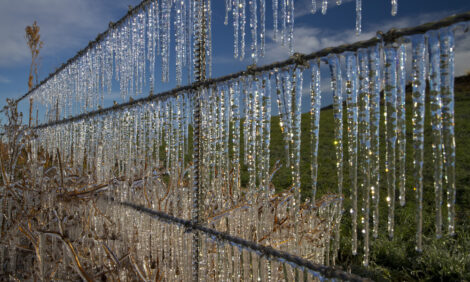



Overgrazing And Wildfires Control
According to New Mexico State University rangeland expert Derek Bailey, overgrazing and 20th century fire-suppression strategies have laid the groundwork for some of today’s “catastrophic” wildfires. In some areas, the grasses that fueled normal and periodic low-intensity surface fires in the past have been replaced by densely packed trees and brush that fuel the raging prairie and forest fires seen in recent years, including record-setting 2011 fires in the Southwest.
Mr Bailey is a professor in the Department of Animal and Range Sciences and the director of NMSU’s Chihuahuan Desert Rangeland Research Center north of Las Cruces. He and other investigators are halfway through a three-year study that, among other things, is investigating the possibility that implementing a targeted grazing strategy for range cattle can significantly reduce the risk of catastrophic wildfires in certain ecosystems.
Titled “Integrated Approaches for Targeting Cattle Grazing to Improve Ecosystem Services,” the project also includes NMSU professor and agricultural economist Allen Torell; Larry D. Howery, a professor and rangeland Extension specialist at the University of Arizona; and Maria Fernandez-Gimenez, an associate professor and expert in the ecological and social dimensions of rangelands at Colorado State University.
The project is funded by a $363,000 grant from the USDA Agriculture and Food Research Initiative.
Their natural tendency is to stay close to water sources, which can lead to deterioration of riparian plant life while leaving an abundance of forage material in more rugged areas or areas away from water. In some cases, the neglected forage exacerbates fire danger.
“Behavior of wildfires is affected by the abundance of what we call ‘fine fuels,’” Mr Bailey said. “Our assumption is that moderate levels of grazing can be used to strategically reduce the levels of fine fuels and correspondingly limit impacts and economic losses of wildfire, by reducing fire risk and rates of fire spread and allowing for the establishment of fire barriers.”
The targeted grazing approach employed by Bailey and his colleagues at four locations in New Mexico and Arizona involves manually herding cattle into the more rugged and remote areas of fine fuel build-up and determining if the availability of forage, along with the strategic positioning of protein supplement blocks, encourages the animals to spend a higher percentage of their time away from the overgrazed areas around their water source.
GPS collars are being used to monitor where the cattle in both the control group situation and the experimental group situation spend their time.
Where the cattle graze and wander is only one element in evaluating the targeted grazing strategy. Researchers need to determine the extent to which the fine fuels are actually being consumed by the cattle and then incorporate that data into what Mr Bailey calls fuel load / fire behavior computer modeling.
To date, the project has been implemented at NMSU’s Corona Range and Livestock Research Center in central New Mexico and on a US Forest Service grazing allotment in the Santa Rita Mountains of Arizona.
According to Bailey, preliminary results suggest that the combination of herding and strategic supplement placement can effectively reduce biomass of fine fuels.
“In Arizona, Howery and I were able to reduce the abundance of fine fuels in the desired target area by half, even though the site was located in steep, rugged terrain and was almost two miles from water,” he said.
“We will continue to evaluate targeted grazing over the next two years in all four study sites to determine if the successes observed thus far can be repeated.”
Mr Torell’s role in the project is to examine the economic feasibility of using targeted cattle grazing to manage fine fuels and other potential ecosystem services. He will incorporate all of the data from the study and work up what is essentially a cost/benefit analysis: are the costs of herding cattle and providing supplements offset by the potential benefits of reducing the intensity and rate of spread of wildfires?
Assuming that the answer to the above question is “yes,” the follow-up question would be: who should bear the additional costs of herding the cattle and purchasing the feed supplements that the new grazing strategy would entail?
“The people who will potentially pay the costs for the targeted grazing – the ranchers – are not the homeowners most likely to realise the major benefits from the grazing activities,” Mr Torell said, pointing out that a good portion of the recent economic loss has been from the destruction of homes owned by people other than ranchers. “This means some type of cost share and incentive programme will be needed to promote adoption of the targeted grazing practice if the practice is found to have economic potential.”
If targeted grazing is shown to be both effective and cost-effective in managing wildfires and their damage, effective communication will be needed to change the behaviors of individuals and organisations responsible for management policy and practices.
Ms Fernandez-Gimenez is assessing how familiar ranchers and public land managers are with the concept of targeted grazing and their level of willingness to incorporate it into their management plans. This information will eventually be used to develop the outreach and extension portion of the project under the terms of the AFRI grant.


